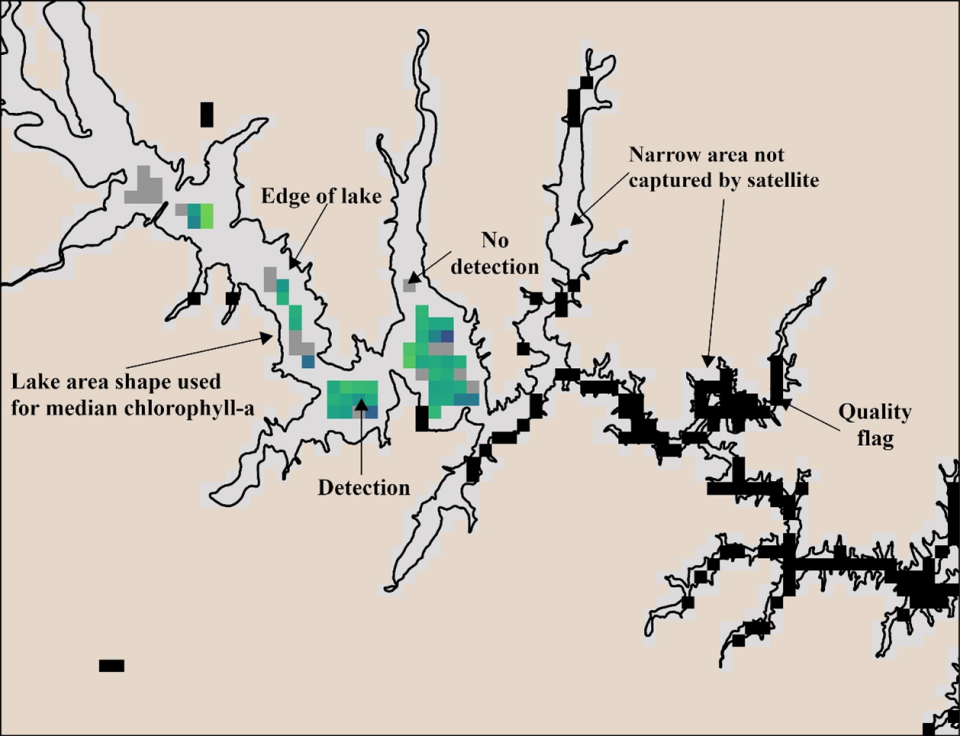HAB Forecasts
A principal responsibility of the U.S. Environmental Protection Agency and National Oceanic and Atmospheric Administration (NOAA) is to provide monitoring and forecasting data on HABs across the United States. Users can access the following resources to find HABs forecasting information for U.S. waterbodies.
Freshwater Forecasts
EPA scientists developed a forecast model to predict weekly cyanobacterial HAB, or cyanoHAB, probability in lakes measured by the Cyanobacteria Assessment Network (CyAN) during the cyanoHAB season from March to November. The cyanoHAB forecast model predicts the weekly probability of a bloom (defined as median lake chlorophyll a ≥12 ug/L with cyanobacteria dominance) occurring in the coming week for over 2,000 of the largest U.S. lakes and reservoirs across the lower 48 states. The model predictions were validated with CyAN satellite data and have an overall prediction accuracy of 90 percent. Note that the forecast is not meant to replace regular sampling or observation, but to help inform those monitoring efforts.
Learn about the development of those forecasts and how the data can be interpreted:
- Cyanobacterial Harmful Algal Blooms Forecasting Research
- Forecasting Model Publication – Schaeffer et al. 2024
The EPA has developed the following dashboards for viewing the weekly forecasts for each resolvable (what this satellite can see accurately) CyAN lake in the United States. The dashboards also provide past forecast information, forecast patterns and downloadable data.
As shown in Figure 1, the CyAN satellite generally does not resolve (“accurately see”) shallow areas along the edge of the lake, small embayments, narrow areas of the lake/reservoir, etc. This means lakes where blooms may be isolated or occur in small specific embayments may not register as having a high probability of a bloom at the scale of all the resolvable portions of the lake. Similarly, lakes/reservoirs that are long and thin may only have resolvable pixels in wider, more open segments where blooms may not occur as much.

Marine Forecasts
Similar to that for Lake Erie, NOAA, its partners, and collaborators serve forecasts for a number of coastal regions including the Gulf of America and Florida, the Gulf of Maine, the Pacific Northwest and California.
